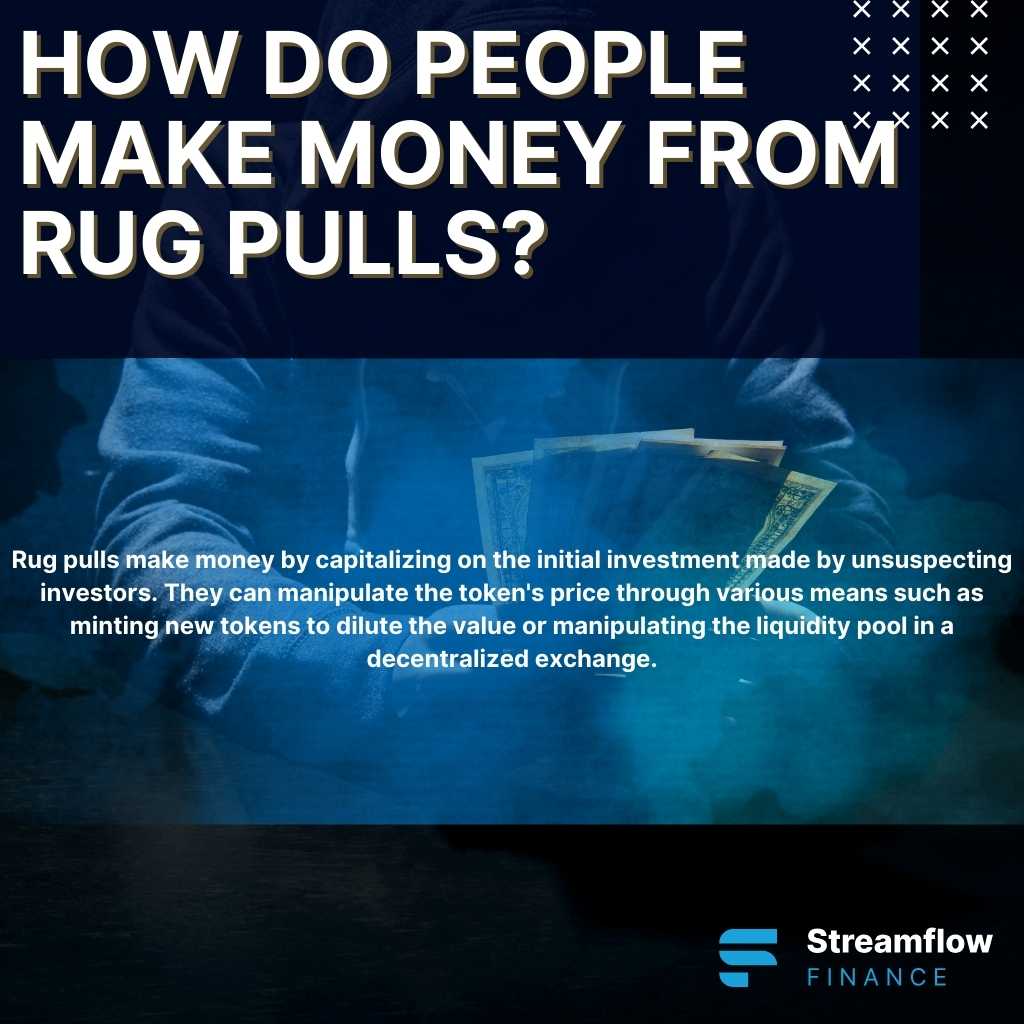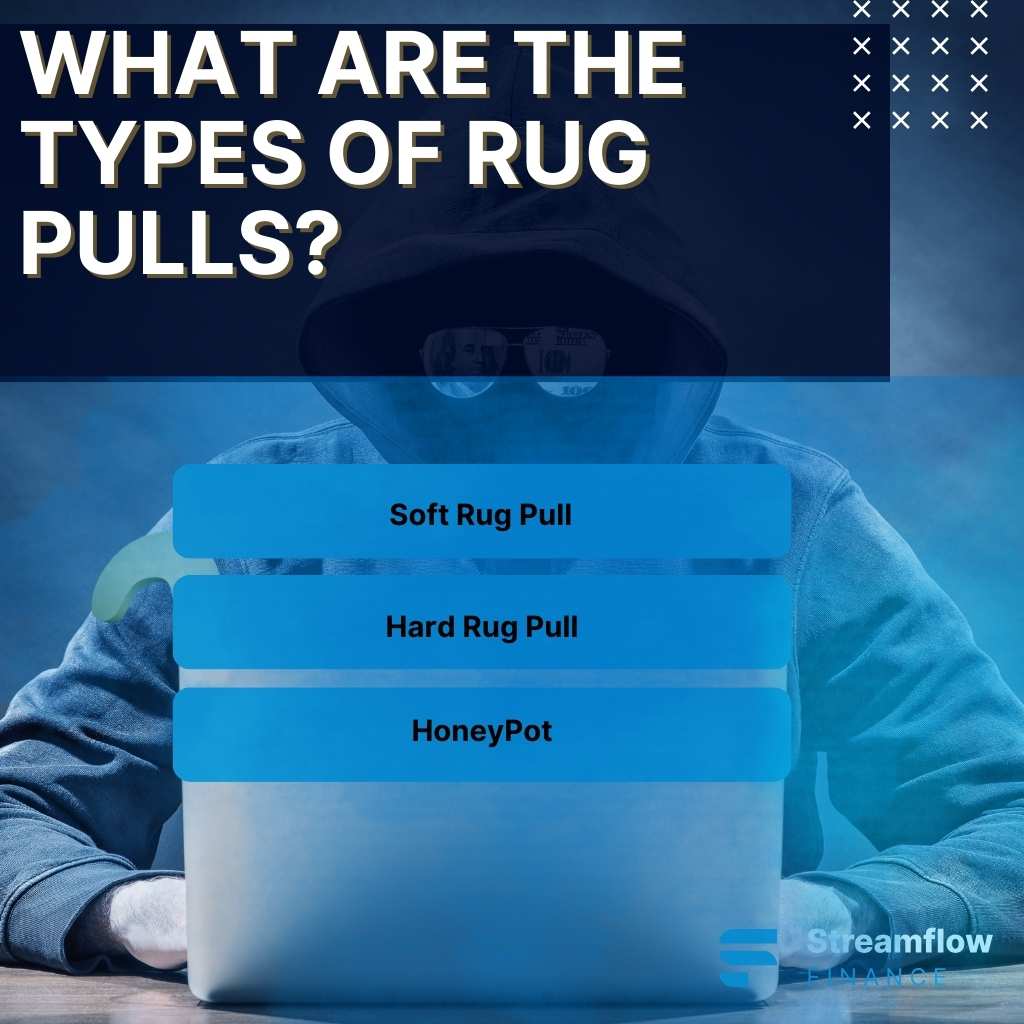General
Introduction to Rug Pull
Sep 17, 2023
In the dynamic world of cryptocurrencies, rug pulls have emerged as a significant concern for investors. This fraudulent scheme, typically orchestrated by the developers of a cryptocurrency project, involves the sudden removal or transfer of liquidity, leaving investors unable to sell their holdings and thereby incurring substantial losses. This article seeks to delve deep into the intricacies of rug pulls, offering readers a comprehensive understanding of their mechanisms, consequences, and prevention strategies.
What is a Rug Pull?
A rug pull is a malevolent scheme within the cryptocurrency realm where project developers abscond a project abruptly, absconding with the funds accrued from investors. This sudden act not only leaves the associated tokens worthless but also annihilates market liquidity and trust in an instant. This section investigates the origins and nuances of rug pulls and their prevalence in the cryptocurrency industry, drawing upon numerous case studies and expert analyses to paint a comprehensive picture.
What is a Rug Pull?
How Does Rug Pull Work?
Case Study 1: The War on Rugs
How do Rug Pulls Make Money?
Actual Rug Pull Example: The Meme Token Boom
What are the Types of Rug Pulls?
Are Rug Pulls Illegal?
Rug Pulls and Regulatory Developments
What is the Biggest Rug Pull Scam?
Effective Strategies to Prevent Rug Pulls
Impact of Rug Pulls on Investors and the Crypto Community
Community Initiatives against Rug Pulls
Conclusion
FAQ Section
How can I spot potential rug pulls before investing in a cryptocurrency project?
What should i do if i've fallen victim to a rug pull?
Are there any regulatory measures in place to prevent rug pulls in the crypto industry?
Was Luna a rug pull?
How Does Rug Pull Work?
To understand how a rug pull works, we need to delve into the initial stages of a cryptocurrency project. Initially, developers create a frenzy around a new token, coaxing investors with promises of lucrative returns. As a substantial amount of investment accumulates, they eliminate liquidity, rendering the tokens practically unsellable. Various tactics are employed by scammers to conduct rug pulls, and this section scrutinizes these methodologies meticulously, providing real-life examples and drawing comparisons with other forms of scams in the crypto space.
Case Study 1: The War on Rugs
In one infamous incident, a self-proclaimed crypto vigilante group named "War on Rugs" who claimed to identify rug pulls, ironically pulled a rug themselves on their token called "FairMoon," causing substantial losses to investors. An analysis of this case can serve as a valuable lesson for investors to remain cautious even when dealing with entities that claim to police the crypto space.
How do Rug Pulls Make Money?
Rug pulls make money by capitalizing on the initial investment made by unsuspecting investors. They can manipulate the token's price through various means such as minting new tokens to dilute the value or manipulating the liquidity pool in a decentralized exchange. The fraudsters then sell their share for a significant profit before abandoning the project, leaving investors with worthless assets.
Actual Rug Pull Example: The Meme Token Boom
During the 2021 meme token boom, numerous rug pulls capitalized on the viral nature of meme tokens. Investors, lured by the promise of quick and substantial returns, poured money into these projects, only to find the liquidity removed overnight. This case study delves into the specifics of these schemes, offering insights into the modus operandi of these scammers and the profits garnered from these operations.

What are the Types of Rug Pulls?
Understanding the types of rug pulls is crucial to prevent falling prey to them. This section offers a comprehensive guide on the varied types of rug pulls and includes detailed tables and analyses to help readers differentiate between them. Here are some categories of rug pulls:
Soft Rug Pull: The developers gradually withdraw from the project, but the project's assets remain, albeit with reduced value.
Hard Rug Pull: The developers suddenly remove all the liquidity and disappear with the investors' funds, leaving the tokens worthless.
HoneyPot: A scam where the tokens cannot be sold due to a flaw or a trap in the contract code.
Table 1: Types of Rug Pulls
Type | Description | Impact on Investors |
Soft Rug Pull | Gradual withdrawal from the project by developers | Decreased token value |
Hard Rug Pull | Sudden removal of all liquidity and disappearance of developers | Worthless tokens |
HoneyPot | Contract code prevents the selling of tokens | Loss of investment |

Are Rug Pulls Illegal?
Yes, rug pulls are categorically illegal, constituting fraudulent activities and deceptive tactics that lead to considerable financial losses for investors. The decentralized aspect of the cryptocurrency market, however, renders it challenging to apprehend and prosecute the culprits. This segment explores the regulatory landscape surrounding rug pulls, the legality of these actions, and ongoing efforts to implement regulatory measures to curb such activities.
Rug Pulls and Regulatory Developments
Recent developments in regulatory frameworks aim to enhance transparency and accountability in the cryptocurrency domain. Several countries are now actively working towards establishing stringent guidelines to protect investors and stabilize the crypto market.
What is the Biggest Rug Pull Scam?
The title of the biggest rug pull scam is unfortunately a competitive one, with numerous significant cases recorded in the history of cryptocurrencies. One of the most notable instances is the DeFi100 scam where the developers allegedly ran off with $32 million of investor funds in 2021. The scale and impact of these scams underline the necessity for vigilance in the crypto investment sphere.
Effective Strategies to Prevent Rug Pulls
To prevent falling victim to a rug pull, investors must employ effective strategies such as:
Conducting thorough research on the project and its developers.
Avoiding investments in projects with anonymous developers.
Utilizing tools and platforms that analyze the risk of crypto projects.
Diversifying their investment portfolio to mitigate potential losses.
Table 2: Strategies to Prevent Rug Pulls
Strategy | Description |
Research | Conduct in-depth analysis of the project and its team |
Avoid Anonymous Developers | Steer clear of projects where the developers are unknown |
Utilize Analytical Tools | Use platforms that assess the risk of cryptocurrency projects |
Diversification | Spread investments across various projects to minimize risk |
Impact of Rug Pulls on Investors and the Crypto Community
The impact of rug pulls on investors and the crypto community is profound, leading to financial losses, reduced trust in the crypto space, and a negative perception of decentralized finance (DeFi) platforms. It stifles innovation as genuine projects find it harder to gain investor trust, and regulators might impose stricter rules to curb these fraudulent activities.
Community Initiatives against Rug Pulls
The crypto community has undertaken several initiatives to protect investors and mitigate the adverse effects of rug pulls. This includes community-led vigilance groups, educational programs, and collaborative efforts with regulatory bodies.
Conclusion
Rug pulls represent a dark facet of the cryptocurrency arena, a space that holds immense potential yet is marred by fraudulent activities. As investors, vigilance and informed decision-making are your most potent weapons against these scams. By understanding the dynamics of rug pulls and implementing strategies to detect and avoid them, you can safeguard your investments and foster a healthier crypto ecosystem.
FAQ Section
How can I spot potential rug pulls before investing in a cryptocurrency project?
To spot potential rug pulls, scrutinize the project's whitepaper, check transparency of the developers, and use platforms that offer risk assessments of various crypto projects. Investors should be vigilant about certain red flags such as undisclosed team members, unrealistics promises of profit, code vulnerabilities, and sudden spikes in token value. It it essential to conduct a detailed analysis of the project's whitepaper, team credentials, and community engagement to avoid potential scams.
What should i do if i've fallen victim to a rug pull?
If you've fallen victim to a rug pull, report the incident to relevant authorities, gather evidence of your investment, and spread awareness to prevent others from falling into the same trap. Such an incident should be reported to the cybercrime unit of your local police department and relevant regulatory bodies in the crypto sector.Gathering and preserving all relevant documentation and transaction details can aid in the investigation.
Are there any regulatory measures in place to prevent rug pulls in the crypto industry?
Yes, there are regulatory measures being actively developed and implemented globally to prevent rug pulls. These measures include introducing more stringent guidelines for crypto projects, enhancing transparency, and promoting community-led initiatives to safeguard investor interests.
Was Luna a rug pull?
The status of Luna as a rug pull is a subject of debate and controversy. Luna, associated with the Terra blockchain, faced allegations and concerns regarding its stability and value. Some sources label it as a potential rug pull, while others dispute this classification.
Tether's Chief Technology Officer (CTO) argued that Terra wasn't a rug pull but rather a poorly designed financial system, likening it to a "castle of cards". This perspective suggests that Luna's issues were more due to structural weaknesses rather than a deliberate scam.
To fully comprehend whether Luna was a rug pull or not, it's essential to consider a variety of sources and opinions, as the crypto space is often characterized by differing viewpoints and interpretations of events. Investors and enthusiasts should exercise caution and conduct thorough research before engaging with any cryptocurrency.